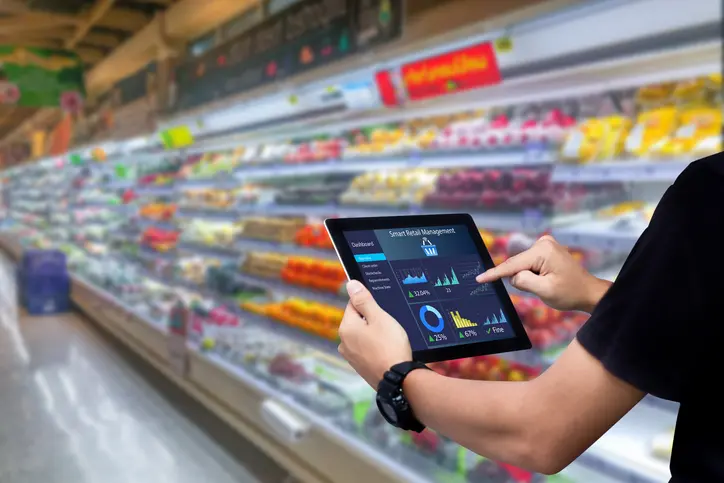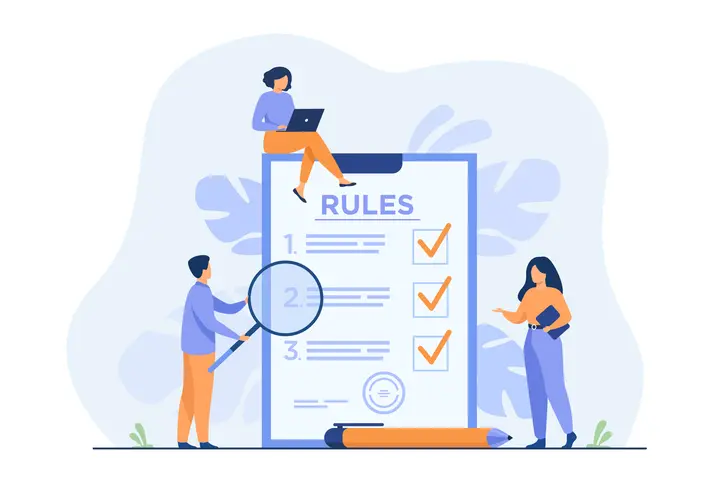Picture this: it’s November 1st, and your warehouse is a graveyard of unsold Halloween costumes. Ouch. Now, flip that script. Imagine the beautiful, frantic chaos of Black Friday, with sales notifications pinging nonstop. Or that quiet, smug confidence you feel after selling out of Christmas stock before the first week of December. That’s where the magic happens. The gulf between these two realities isn’t luck. It’s a mastery of ecommerce demand planning, the make-or-break discipline that separates record-smashing profits from a balance sheet horror show of obsolete inventory. For seasonal brands, getting this right isn’t just an edge—it’s the entire game.
The Foundation: Why Seasonal Demand is a Unique Challenge
Selling a product that people buy all year? That’s one thing. Selling products that basically have an expiration date? That’s a whole different beast. Seasonal items put you on a razor’s edge, caught in a brutal tug-of-war between ordering way too much and not ordering nearly enough. There is no safe middle ground. That’s why ecommerce demand planning becomes so critical for seasonal brands.
Get over-optimistic and order a mountain of inventory, and you’re staring down the barrel of eroded profit margins. You’re forced into desperate, last-minute sales that torch your earnings, all while your cash is tied up in stuff nobody wants. But coming up short is just as bad. Understocking means immediate lost sales, sure, but the real damage is the ripple effect of pissing off your customers. That “out of stock” notice sends them right to your competitors, and they might not bother coming back next year. The selling window is tiny, the margin for error even smaller. That’s why you have to know how to prevent stock outs before they completely wreck your biggest season.
Building Your Forecast: Key Data and Influencing Factors
Look, a solid forecast isn’t about gazing into a crystal ball. It’s about being a detective. You’re piecing together clues from two main places: what’s happened inside your own business, and what’s going on in the world outside. Get this combo right, and you’re not guessing—you’re strategizing, and that’s the heart of ecommerce demand planning.
Analyzing Historical Sales Data
To know where you’re going, you gotta know where you’ve been. But just glancing at last year’s total sales number? Total amateur hour. You need to get your hands dirty and go way, way deeper. I mean, break it all down: SKU by SKU, category by category, week by week, even day by day. When did things really pop off? Was it that one chunky knit sweater that went nuts in mid-October? Or the gift set that just sat there collecting dust until the first real cold snap hit? You’re looking for the rhythm of your business—the kind of detail that makes or breaks ecommerce demand planning.
But here’s the kicker: your past data is probably lying to you. You have to “clean” it. That two-week stockout on your bestseller last year? It created a fake dip in your sales numbers. That viral TikTok that gave you a crazy, unrepeatable sales spike? That’s an outlier, not a trend. You have to smooth out those bumps and iron out those wrinkles to see what really happened. Without an accurate history, your forecast is built on a foundation of sand.
Incorporating External Factors and Market Signals
Your own sales data is only half the story. It tells you what sold, but it doesn’t tell you why—and it definitely can’t predict what’s coming next. To build a forecast that can actually withstand reality, you have to look outside your own four walls and layer in some real-world intel. We’re talking about keeping an eye on a few key things:
- Market trends: What’s blowing up on TikTok and Instagram? What colors, styles, or gadgets are people suddenly obsessed with?
- Competitor activity: Is your biggest rival about to drop a massive sale or launch a product that goes head-to-head with your hero item?
- Economic conditions: Are people feeling flush and ready to spend, or are they tightening their belts?
- External events: Don’t forget the obvious! Holidays, back-to-school season, even a big snowstorm forecast can make or break sales for certain products.
And don’t forget the most important external factor of all—one that you control. Your planned marketing and promotional activities aren’t just something you do to get sales; they are a massive lever you pull to create sales. The money you’re about to drop on ads, the email blasts you’ve got scheduled, that influencer collab you’ve lined up? Those aren’t afterthoughts. They are core ingredients that have to be baked into your forecast from day one, and they play a central role in ecommerce demand planning.
The Execution Plan: A Phased Approach to Seasonal Management
Nailing your seasonal demand plan isn’t a “set it and forget it” kind of deal. It’s a living, breathing process. Think of it like a three-act play: the build-up, the main event, and the after-party. Breaking it down like this stops it from being overwhelming and makes the whole thing manageable.
Pre-season: The Planning and Preparation Phase
We’re talking months—yes, months—before you even think about making your first sale. This is the deep-work phase where you lay all the groundwork. Once you’ve locked in your forecast, you’re immediately on the phone placing purchase orders with your suppliers to make sure you get your spot in the production queue. This is also when you’re mapping out your entire logistics game plan. Which warehouse gets what? How are you splitting stock between your site and Amazon? And crucially, your marketing launch needs to be aligned with the supply plan. No point in hyping up a product that’s still on a boat in the middle of the ocean.
In-season: The Monitoring and Adjustment Phase
Okay, the season’s live. Let’s go! No matter how much you prepared, this is where the chaos begins, because no plan ever survives contact with the customer. Winning now is all about being nimble. This is real-time management, making calls on the fly based on what the data is telling you right now. You need to be glued to your sales velocity, watching what’s flying off the shelves and what’s collecting dust. See a product exploding beyond your wildest dreams? Pour more gas on the fire and crank up the ad spend. Got a slow-mover on your hands? Time for a quick pivot. Maybe you bundle it with a bestseller or hit it with a flash sale to stimulate demand before you’re forced into a massive clearance sale later.
Post-season: The Analysis and Learning Phase
When the madness is over and the last package is shipped, the real work for next year starts. It’s time to review the game tape. This isn’t about blaming anyone; it’s about getting smarter. You need to do a serious post-mortem analysis, putting your original forecast side-by-side with the cold, hard sales numbers. What went right? What went wrong? And don’t just stop there—dig into the why. Was our pricing off? Did we pull the trigger on markdowns too early? Or too late? The final move is to map out a ruthless plan for liquidating any leftover stock, using what you’ve just learned to kick off the planning cycle for the next season.
Technology and Advanced Strategies for an Edge
If you’re still trying to manage all this with a massive spreadsheet and a “gut feeling,” you’re bringing a knife to a gunfight. The brands that absolutely crush it every single season aren’t just guessing better—they’re using powerful tools and next-level strategies to get a serious edge.
Leveraging AI and Predictive Analytics
Let’s be real, the human brain can only juggle so much. That’s where tech comes in. Machine Learning algorithms and AI demand forecasting tools can see things you’ll just never spot on your own. They can chew through hundreds of data points at once—your past sales, sure, but also weather forecasts, competitor price changes, even the buzz on social media—and find hidden connections a human would miss. These models spit out a much smarter, more accurate prediction of what’s coming. Even better, when you plug these tools directly into your other systems, you get a beautiful single source of truth across the whole company and can automate things like re-ordering your hits before you even know you’re running low.
This is exactly where Intuendi helps. Their AI-powered platform is built for seasonal brands, giving you smarter forecasts, automated reordering, and the confidence to meet demand without the waste.
Strategic Inventory and Pricing Management
A killer forecast is useless if you can’t act on it. This is where you get tactical to squeeze every last drop of profit out of the season. Think fulfillment optimization—making sure your warehouse can actually handle the flood of orders without imploding and delaying shipments. Then there’s the really cool stuff, like dynamic pricing, where your prices can automatically adjust based on how hot an item is, how much stock you have left, or what your competitors are doing. Another pro move? Smart cross-sells and upsells. Got a ton of a certain accessory in stock? Program your store to suggest it every time someone buys your bestseller. It’s a simple way to boost your average order value and clear out inventory at the same time.
Avoiding Common Pitfalls and Building a Collaborative Process
You can have the best data and the fanciest software in the world, but if your team isn’t talking to each other, you’re going to fail. Seriously. The biggest, most expensive blunders in seasonal planning almost always come down to bad communication and broken internal workflows.
One of the most dangerous traps is just blindly trusting last year’s data without asking why the numbers are what they are. This is why the single most important factor is cross-functional collaboration. If your teams are stuck in their own little worlds, your forecast is dead on arrival. We’ve all seen it happen: Marketing spins up a brilliant promo that goes viral… and doesn’t tell the supply chain team, leading to an immediate stockout and a mob of angry customers. Or the supply team finds a cheaper supplier but doesn’t mention that delivery will be two weeks later, totally wrecking the marketing launch calendar.
To stop this chaos, you need a unified game plan. A great way to do this is with a sales and operations planning process. It sounds corporate, but all it really means is getting the heads of every department in the same room on a regular basis. They look at the same data, agree on one single forecast, and make decisions together—ensuring everyone in the entire company is playing from the same playbook and aligned on effective ecommerce demand planning.






